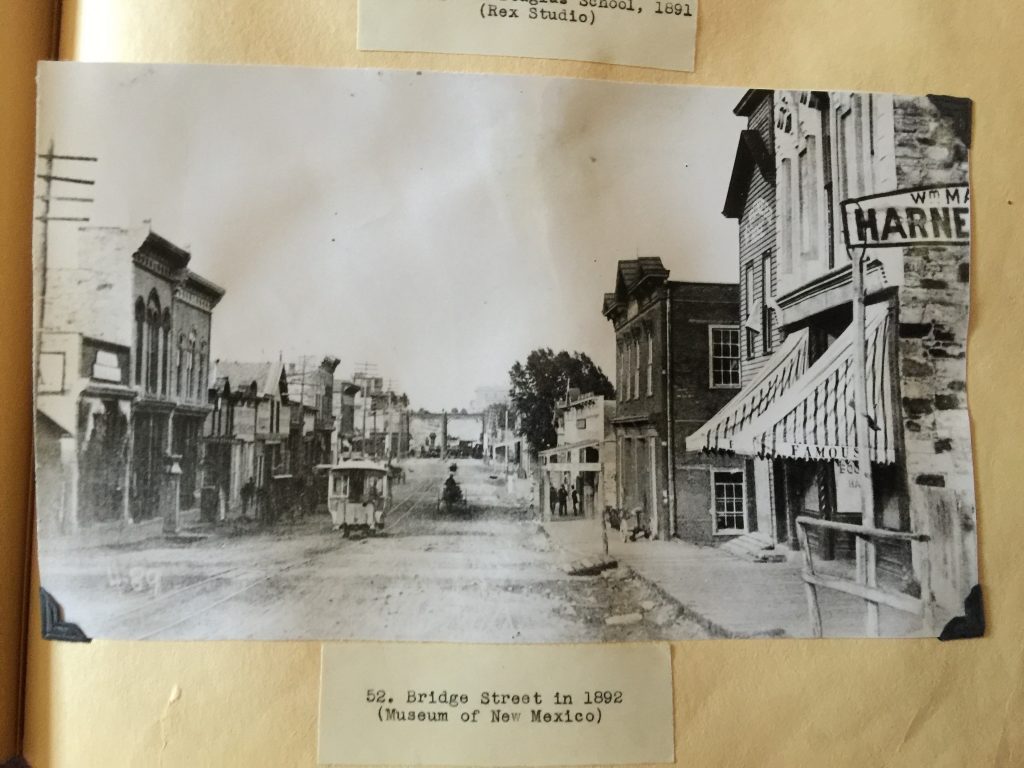
Ancestor Photos: Caring For and Sharing. Part 1
Whether tucked away in a shoe box, lovingly placed into a photo album or nestled comfortably into the same frames for a century or more, the photos that link to us to the stories of our heritage are fragile artifacts that require careful attention, even as we steward them into the digital age.
We will also look at some things that we can all do, to improve storage conditions of our photos and some tips on safely handling them during the process of digitization. Few of us have access to state of the art digitization labs, so we will also look at a few things that can be done improve the quality of our digitization efforts using technology that many of us use every day.
For our first post, we will concentrate on our most common type of photo, the process print on paper. This can include both photos from a commercial developer, prints made in a home darkroom, as well as self-developing film like Polaroid.
It is helpful to remember that one thing all physical photos have in common, is that they are chemistry. Volatile chemicals are exposed to light and then fixed in time and place with more chemicals. Preserving photos is all about arresting further changes to those chemicals. We do this by guarding against exposure to anything that might make those chemicals active again, such as moisture, light and heat.

You might see, ‘Store In A Cool Dry Place’ on the side of a shipping box of perishables, this accurately describes the best conditions for storing photos. Believe it or not, that shoebox under the bed is actually a pretty good cool dry place. It is dry, away from light and the bedroom is a room in the house often kept at fairly stable temperatures and humidity (you want to avoid extreme cold in addition to extreme heat, but more importantly, you want to avoid temperature fluctuations). Under the bed, is slightly less ideal than say, on a shelf in the bedroom closet, only because being on the ground increases the chance that dust, crawling insects, a curious pet or child or an accidental flood might play mischief with your photos. A good rule of thumb is that what is comfortable for you, is comfortable for your photos. Attics, basements and garages are terrible places to keep your photos.
The other limitation to our shoebox is that the photos are often piled on top of each other, this increases the chances that the photos might stick together after prolonged storage, especially during humidity spikes. If you choose to store your photos loose, it is a good idea to separate them using an archival quality divider or better yet, individual archival quality sleeves (regular envelopes can actually be very destructive to photos). This generally means paper or plastic that is free of ‘acid, lignin and PVC’ (this also includes the boxes, and don’t overpack them). You could also store photo albums made from these same archival quality materials, and then store the albums in a box.
You may have inherited photo albums that were put together using adhesive tape, glue and other materials and have noticed that those materials have damaged your photos. At this point it is best to leave those photos as is and keep them as stable as possible, while investigating non-destructive digitization strategies that can accommodate their fragile and often awkward condition as you work with them. The same goes for photos in frames. Unless the frame is damaged and endangering the photo, your photo is possibly mounted with an adhesive and attempting to remove it from the frame could be destructive.

Archival quality materials are easily available, but can quickly become expensive, so do your best and prioritize photos that are in the most danger of deteriorating, and stabilize them first. Even the Library of Congress has to prioritize when it comes to this race against time, but it is worth the effort.
To summarize:
COOL – Lower temperatures are better but not extremely low, and the real secret is a relatively stable temperature without extreme fluctuations.
DRY – Low humidity is appreciated, but again, stability and moderation are the key. Moisture risks exposing your photos to condensation and mold, but too dry and the paper gets brittle.
LIMIT EXPOSURE TO LIGHT – All light acts upon and deteriorates the chemicals in your photos, bright light and prolonged exposure to light, accelerate deterioration. Keep your photos out of direct natural and prolonged artificial light whenever possible.
NON-REACTIVE – Keep photos away from materials that might chemically react with them. This includes other photos and paper and plastic storage materials that are chemically active (such as acid, lignin, and PVC) but also includes the oils in your hands and adhesives like glue, tape and rubber bands.
In our next post, we will look at some ways to improve our photos of our photos, and look at other accessible scanning techniques.
Featured Image: Indrajit Das, ‘A photo album owned by Indian travel writer Saktipada Bhattacharyya’ . Used under Creative Commons license by permission of the author.
One thought on “Ancestor Photos: Caring For and Sharing. Part 1”